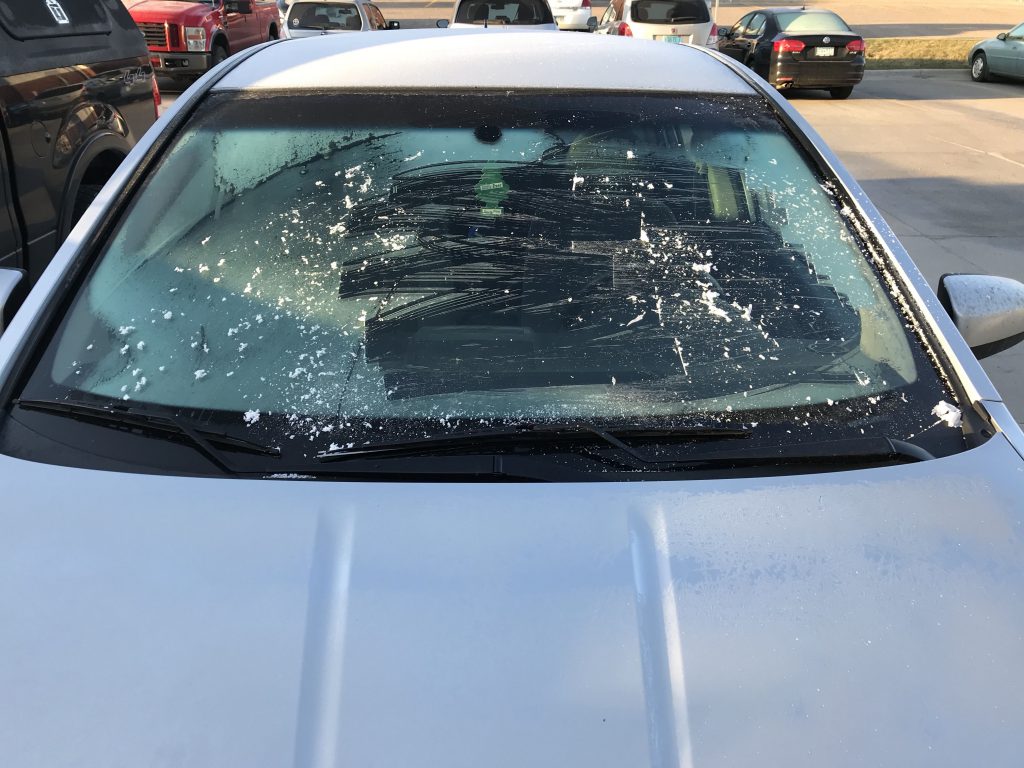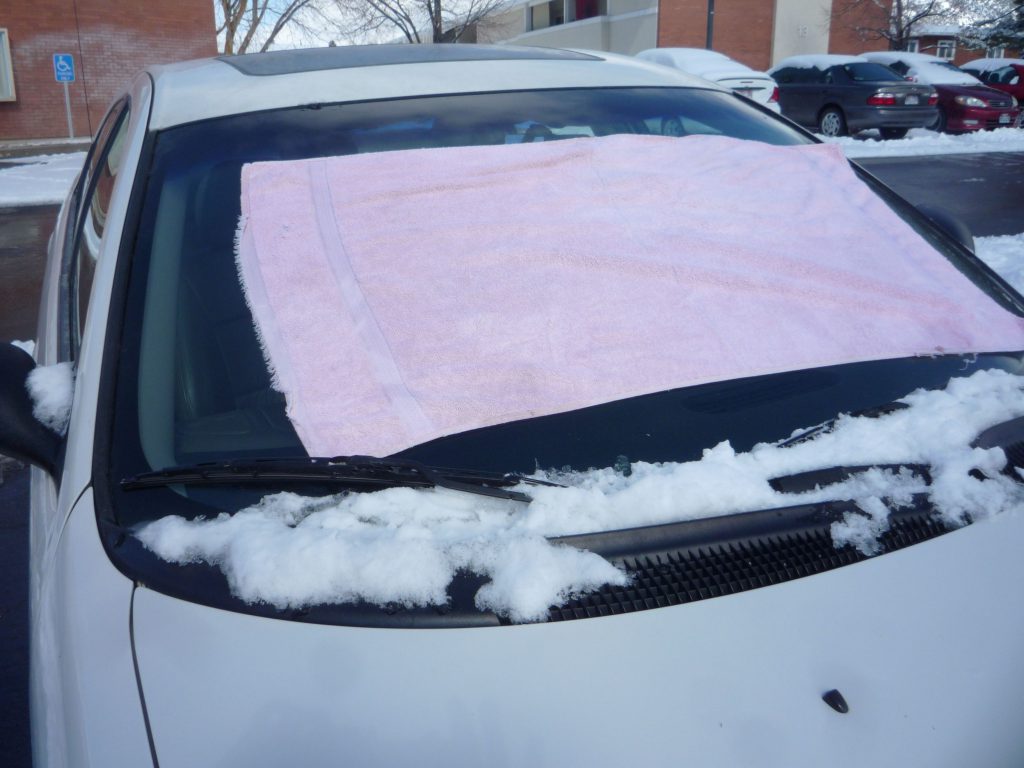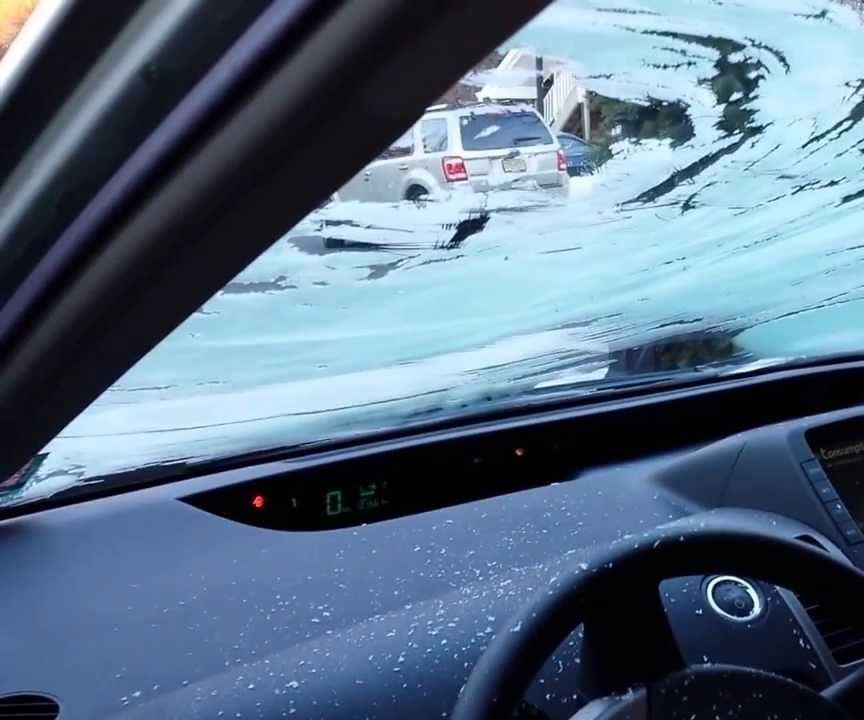In freezing cold or on heavy rainy days with snow, drivers often encounter frost on inside of windshield, which obstructs vision and affects the movement process. Frost inside the windshield will make it difficult for the driver to observe, cause discomfort, and can be potentially dangerous. In today’s feature, we talk about the reasons and how to remove the ice on your windshield.
Contents
Why Does My Windshield Frost Up On The Inside?
The car windshield is an important part installed in front of the car, both increasing the aesthetics, ensuring the safety of the driver, and completing the vehicle structure. It is likened to an armor plate that is subject to the direct impact of the environment such as light, UV rays, objects, and dust… protect the driver and complete the vehicle design. All drivers know the role of a windshield in the vehicle. Suddenly, when you wake up in the winter morning and notice the frost on your windshield, what are the reasons? Let’s explore with us:

Damaged door seal or window
This is the popular reason leading to the frost inside of the windshield. When the outdoor temperature drops below 0 degrees you will notice a thin layer of ice forming inside the windshield. The cause is as the doors or windows of your vehicle have cracks or are not sealed, worn, or damaged rubber seals can create conditions for steam to invade the vehicle.
Over time the rubber seals around the doors can become weaker and worn out. They can open up on their own, buckling out of the door frame and starting to leave a gap between the door frame and the rubber gasket. So, don’t forget to check the small detail if you notice the frost buildup on the inside of the windshield.
Temperature
Low temperatures can make your windshields covered with frost on the inside. Windshields are typically designed with a heat-conducting material that allows them to easily absorb heat from the surrounding environment. In hot weather, the heat of the sun will quickly counteract the cooling effect of the glass. However, in cold weather, there will be a temperature difference between the outside and the glass, causing condensation on the windshield. In cold air, water vapor will condense and turn into ice.
Excessive moisture
In winter, the weather is erratic, sometimes a terrible minus, sometimes a slight thaw. For example, the weather is warm during the day, it rains and snows, it starts to get colder in the evening, and as a result, the moisture that accumulates on the glass turns into ice that freezes the wipers down the glass.
This situation occurs based on the principle of condensation when mixing the cold in your car. Or this can be caused by human respiration or by evaporation from wet objects in your car. The amount of water vapor in contact with the cold glass surface condenses to form the ice that obstructs the driver’s vision, making it more difficult to control the vehicle.
>> Related post: What Causes Windshield To Crack? The Possible Reasons
How To Prevent Frost On Inside Of Windshield?
Some tips below will help drivers overcome the situation of the inside of the windshield being frozen effectively:

Avoid placing wet objects in your car
Water vapor from wet coats, rain umbrellas or damp towels, etc., placed in the car when exposed to the warm air, will evaporate. If the driver does not open the door, this amount of steam remains in your car and condenses on the glass. Therefore, to reduce the possibility of ice formation in the car, car owners should limit placing wet objects in the cabin without covering or wrapping.
Balance the temperature inside and outside the car
On a cold day, you usually want to close all the windows to keep out the cold, however, this is not an ideal measure as it can form ice on the windshield. To prevent this situation, you can open or lower the glass by 10-15 cm to help air circulation and moisture escape, create a balance of temperature inside and outside the car, and reduce the condition of condensation. This manipulation is extremely simple, does not consume fuel but is highly effective. However, drivers should only apply in case of light rain and not too cold weather.
Turn on your air conditioner
The car’s air conditioning system not only helps you regulate the desired temperatures but also helps you remove humid air effectively. Frost on the inside of the windshield is caused by the difference between the outside and inside temperatures. Therefore, drivers should turn on the AC and adjust the blower towards the windshield, helping to dry the glass.
Note that you should not choose a temperature that is too cold, causing the temperature in the vehicle to be too much lower than outside the car. However, to avoid too cold temperatures that will affect the health of the occupants, especially the elderly and young children, you should only choose a temperature difference of 2-3 degrees compared to the outdoors and turn off the air conditioner immediately when the frost on the inside of the windshield disappears.
When you turn on the air conditioner, the amount of steam sticking to the windshield surface will immediately evaporate. Even the moisture in your breath is dispersed into the air instead of settling on the windshield.
Make sure your windshield is always clean
If your windshield is foggy with frost, you may be in danger due to limited visibility. It is essential to clean the windshield from the inside regularly. With just a few simple steps, you can clean and polish your windshield like new. To avoid scratches on the glass surface, you can use a soft towel or paper to clean the glass. Besides helping you deal with ice buildup, it also helps you see better and prevents possible accidents.
Using a dehumidifier for cars
Car owners can use a portable dehumidifier to reduce steam and limit frost. When the air is sucked in and passes through the evaporator, the steam will be condensed. And some of the remaining air will escape to the rear of the unit.
Use anti-steam additives
Use shaving foam or an anti-steam additive on a soft, dry, clean cloth to wipe each area on the car glass. Wait at least 2 minutes, then use another dry towel to wipe away any remaining foam on the glass. In addition, you can use Silica Gel to reduce the humidity in your car. As we analyzed, when the air humidity in your car is too high, this creates thin layers of ice inside the windshield. In this case, Silica Gel is a good option for you.
In daily life, people often encounter silica gel in small packages placed in medicine bottles, in food packages, and in electronic products. There, silica gel acts as a desiccant to keep the above products from being damaged by moisture. Similarly, when silica gel packets are placed in the car, they will help absorb moisture and help keep the car’s space dry and comfortable. There’s a note that when you put these packets into your car. You should find a safe position to put Silica gel to keep them out of reach of children. Because it can cause danger if your child eats that.
>> Read more: Best Ways To Clean Bugs Off Windshield
Final Thoughts
Frost on inside of windshield always happens in the cold climate and for the drivers, it must be an annoying problem. However, if you know how to apply simple tips. Drivers can certainly limit this situation and completely move-in harsh conditions while still ensuring maximum safety.
In addition to the frosted windshield, cars also often fog up the rearview mirror because of high air humidity. How to stop your car freezing inside? or Which method do you usually use to fix the problem? Let us know by commenting on the below box. Please read our next articles for more useful information for drivers.



